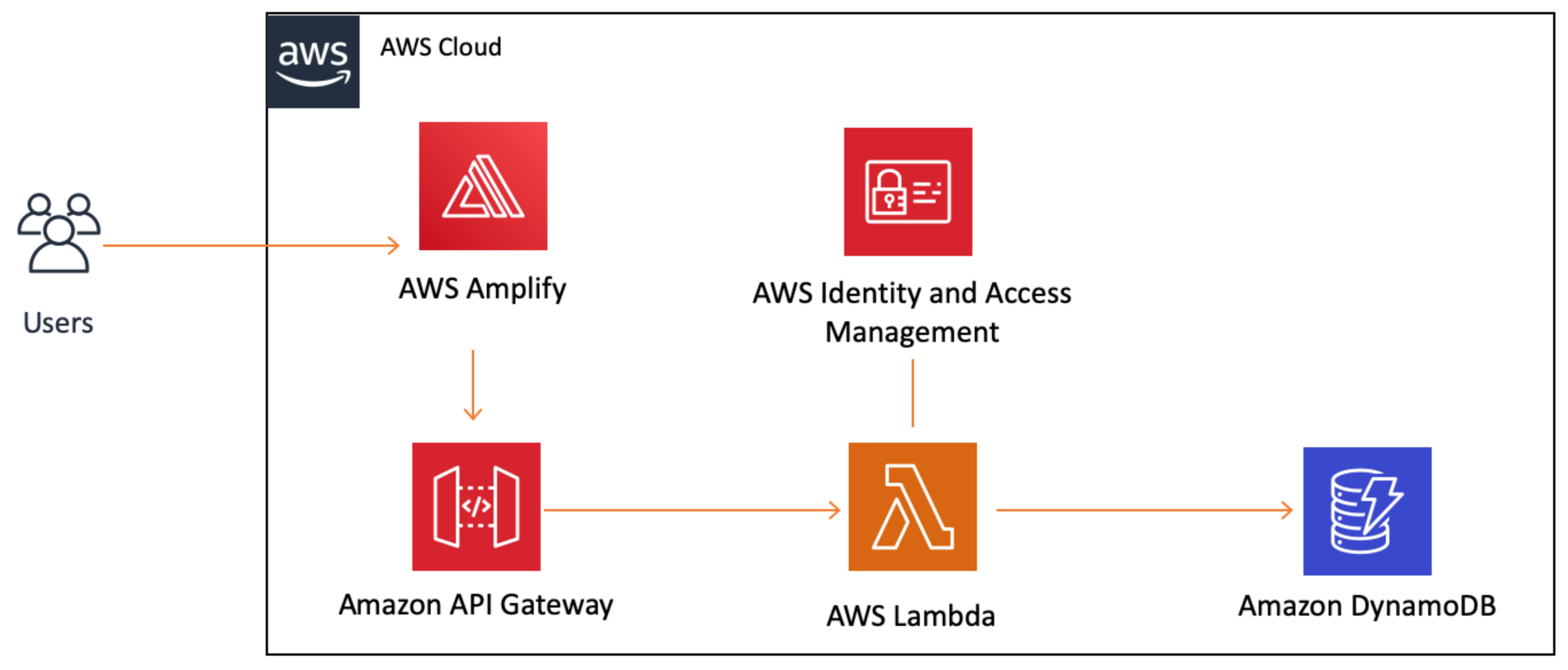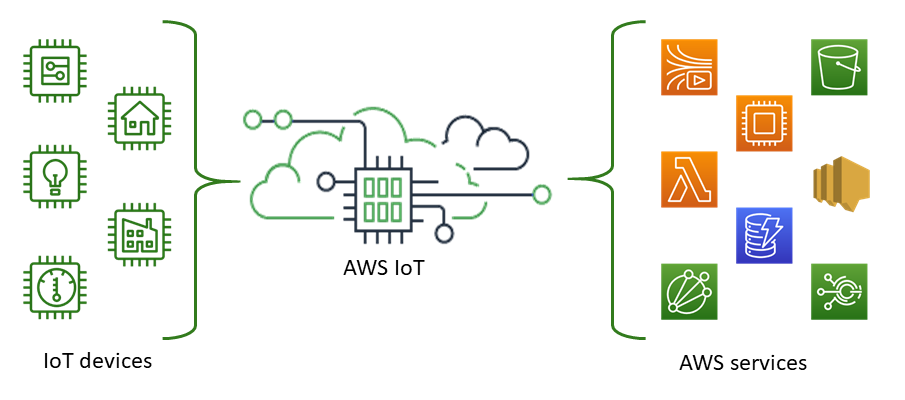Question
Time left
Score
0
What is the answer to this questions?
A
Choice 1
B
Choice 2
C
Choice 3
D
Choice 4
0
Technologie Exam Details (33%)
- Define methods of deploying and operating in the AWS Cloud
- Define the AWS global infrastructure
- Identify the core AWS services
- Identify resources for technology support
1
Sticky Session
With HTTP and HTTPS traffic, what feature of an Application Load Balancer can be used to bind a user’s session to a specific instance?
By default, a Classic Load Balancer routes each request independently to the registered instance with the smallest load. However, you can use the sticky session feature (also known as session affinity), which enables the load balancer to bind a user's session to a specific instance. This ensures that all requests from the user during the session are sent to the same instance.
2
AWS CodeCommit
AWS CodeCommit is a fully-managed source control service that hosts secure Git-based repositories. It makes it easy for teams to collaborate on code in a secure and highly scalable ecosystem. CodeCommit eliminates the need to operate your own source control system or worry about scaling its infrastructure. You can use CodeCommit to securely store anything from source code to binaries, and it works seamlessly with your existing Git tools.
3
AWS CloudFormation
AWS CloudFormation simplifies provisioning and management on AWS. You can create templates for the service or application architectures you want and have AWS CloudFormation use those templates for quick and reliable provisioning of the services or applications (called “stacks”). You can also easily update or replicate the stacks as needed.
4
S3 Lifecycle Policy
You can add rules in an S3 Lifecycle configuration to tell Amazon S3 to transition objects to another Amazon S3 storage class. For example: When you know that objects are infrequently accessed, you might transition them to the S3 Standard-IA storage class. You might want to archive objects that you don't need to access in real time to the S3 Glacier storage class.
5
Amazon DynamoDB: JSON Support
The latest Amazon DynamoDB update added support for JSON data, making it easy to store JSON documents in a DynamoDB table while preserving their complex and possibly nested shape. Now, the AWS SDK for .NET has added native JSON support, so you can use raw JSON data when working with DynamoDB. This is especially helpful if your application needs to consume or produce JSON (for instance, if your application is talking to a client-side component that uses JSON to send and receive data), as you no longer need to manually parse or compose this data.
6
Glacier Deep Archive
Glacier Deep Archive meets the requirement and is the cheapest option. Amazon S3 Glacier and S3 Glacier Deep Archive are a secure, durable, and extremely low-cost Amazon S3 cloud storage classes for data archiving and long-term backup. They are designed to deliver 99.999999999% durability, and provide comprehensive security and compliance capabilities that can help meet even the most stringent regulatory requirements.
7
AWS CloudTrail
AWS CloudTrail increases visibility into your user and resource activity by recording AWS Management Console actions and API calls. You can identify which users and accounts called AWS, the source IP address from which the calls were made, and when the calls occurred
8
AWS CodePipeline
AWS CodePipeline is a fully managed continuous delivery service that helps you automate your release pipelines for fast and reliable application and infrastructure updates. CodePipeline automates the build, test, and deploy phases of your release process every time there is a code change, based on the release model you define. This enables you to rapidly and reliably deliver features and updates.
9
Amazon CloudFront
Amazon CloudFront is a fast content delivery network (CDN) service that securely delivers data, videos, applications, and APIs to customers globally with low latency, high transfer speeds, all within a developer-friendly environment. CloudFront is integrated with AWS – both physical locations that are directly connected to the AWS global infrastructure, as well as other AWS
10
AWS CodeStar
AWS CodeStar is a cloud-based service for creating, managing, and working with software development projects on AWS. You can quickly develop, build, and deploy applications on AWS with an AWS CodeStar project.
11
AWS ELB
Elastic Load Balancing automatically distributes incoming application traffic across multiple targets, such as Amazon EC2 instances, containers, IP addresses, and Lambda functions. It can handle the varying load of your application traffic in a single Availability Zone or across multiple Availability Zones. Elastic Load Balancing offers three types of load balancers that all feature the high availability, automatic scaling, and robust security necessary to make your applications fault-tolerant.
12
AWS S3 Characteristics
S3 provides high durability storage of objects.
S3 allows you to store unlimited amounts of data.
Objects are directly accessible via a URL.
13
Which storage mechanisms can be used to store messages effectively which can be used across distributed systems?
Amazon Simple Queue Service (Amazon SQS) offers a reliable, highly-scalable hosted queue for storing messages as they travel between applications or microservices. It moves data between distributed application components and helps you decouple these components.
14
You are exploring what services AWS has off-hand. You have a large number of data sets that need to be processed. Which service can help fulfil this requirement.
Amazon EMR helps you analyze and process vast amounts of data by distributing the computational work across a cluster of virtual servers running in the AWS Cloud. The cluster is managed using an open-source framework called Hadoop. Amazon EMR lets you focus on crunching or analyzing your data without having to worry about time-consuming setup, management, and tuning of Hadoop clusters or the compute capacity they rely on.
15
Mention The Basic Components Of A Server Computer In Cloud Computing?
The components used in less expensive client computers matches with the hardware
components of server computer in cloud computing. Although server computers are usually built
from higher-grade components than client computers. Basic components include Motherboard,
Memory, Processor, Network connection, Hard drives, Video, Power supply etc.
16
Explain what S3 is?
- S3 stands for Simple Storage Service. You can use S3 interface to store and retrieve any
amount of data, at any time and from anywhere on the web. For S3, the payment model is “pay
as you go.”
-
17
What is AMI?
- AMI stands for Amazon Machine Image. It’s a template that provides the information (an
operating system, an application server, and applications) required to launch an instance, which
is a copy of the AMI running as a virtual server in the cloud. You can launch instances from as
many different AMIs as you need.
-
18
Mention what the relationship between an instance and AMI is?
- From a single AMI, you can launch multiple types of instances. An instance type defines the
hardware of the host computer used for your instance. Each instance type provides different
computer and memory capabilities. Once you launch an instance, it looks like a traditional host,
and we can interact with it as we would with any computer.
-
19
How many buckets can you create in AWS by default?
- By default, you can create up to 100 buckets in each of your AWS accounts.
20
Explain can you vertically scale an Amazon instance? How?
Yes, you can vertically scale on Amazon instance. For that
- Spin up a new larger instance than the one you are currently running
- Pause that instance and detach the root webs volume from the server and discard
- Then stop your live instance and detach its root volume
- Note the unique device ID and attach that root volume to your new server
- And start it again
21
Explain what T2 instances is?
- T2 instances are designed to provide moderate baseline performance and the capability to burst
to higher performance as required by the workload.
22
In VPC with private and public subnets, database servers should ideally be launched
into which subnet?
- With private and public subnets in VPC, database servers should ideally launch into private
subnets.
23
Is the property of broadcast or multicast supported by Amazon VPC?
- No, currently Amazon VPI not provide support for broadcast or multicast.
24
Explain default storage class in S3
- The default storage class is a Standard frequently accessed.
25
What are the Roles in AWS?
- Roles are used to provide permissions to entities which you can trust within your AWS account.
Roles are very similar to users. However, with roles, you do not require to create any username
and password to work with the resources.
26
What are the edge locations?
- Edge location is the area where the contents will be cached. So, when a user is trying to
accessing any content, the content will automatically be searched in the edge location.
27
Explain snowball
- Snowball is a data transport option. It used source appliances to a large amount of data into and
out of AWS. With the help of snowball, you can transfer a massive amount of data from one
place to another. It helps you to reduce networking costs.
28
What is a redshift?
- Redshift is a big data warehouse product. It is fast and powerful, fully managed data warehouse
service in the cloud.
29
What are the advantages of auto-scaling?
- Offers fault tolerance
- Better availability
- Better cost management
30
What is Amazon EMR?
- EMR is a survived cluster stage which helps you to interpret the working of data structures
before the intimation. Apache Hadoop and Apache Spark on the Amazon Web Services helps
you to investigate a large amount of data. You can prepare data for the analytics goals and
marketing intellect workloads using Apache Hive and using other relevant open source designs.
31
What is SQS?
Simple Queue Service also known as SQS. It is distributed queuing service which acts as a
mediator for two controllers.









